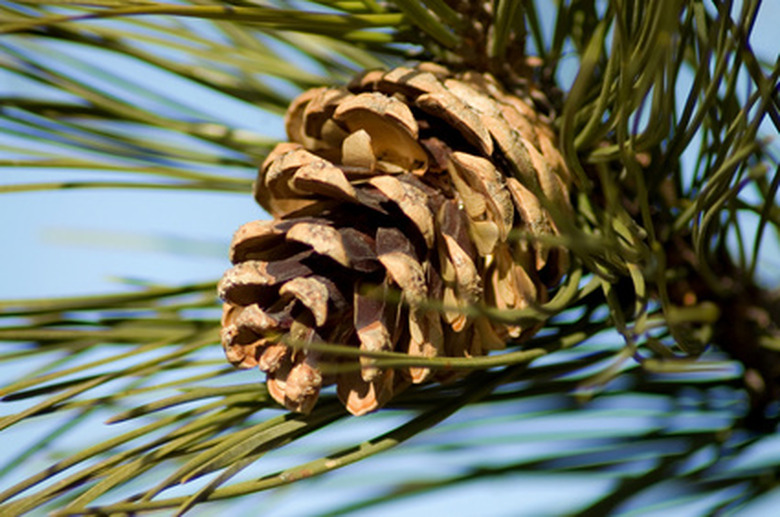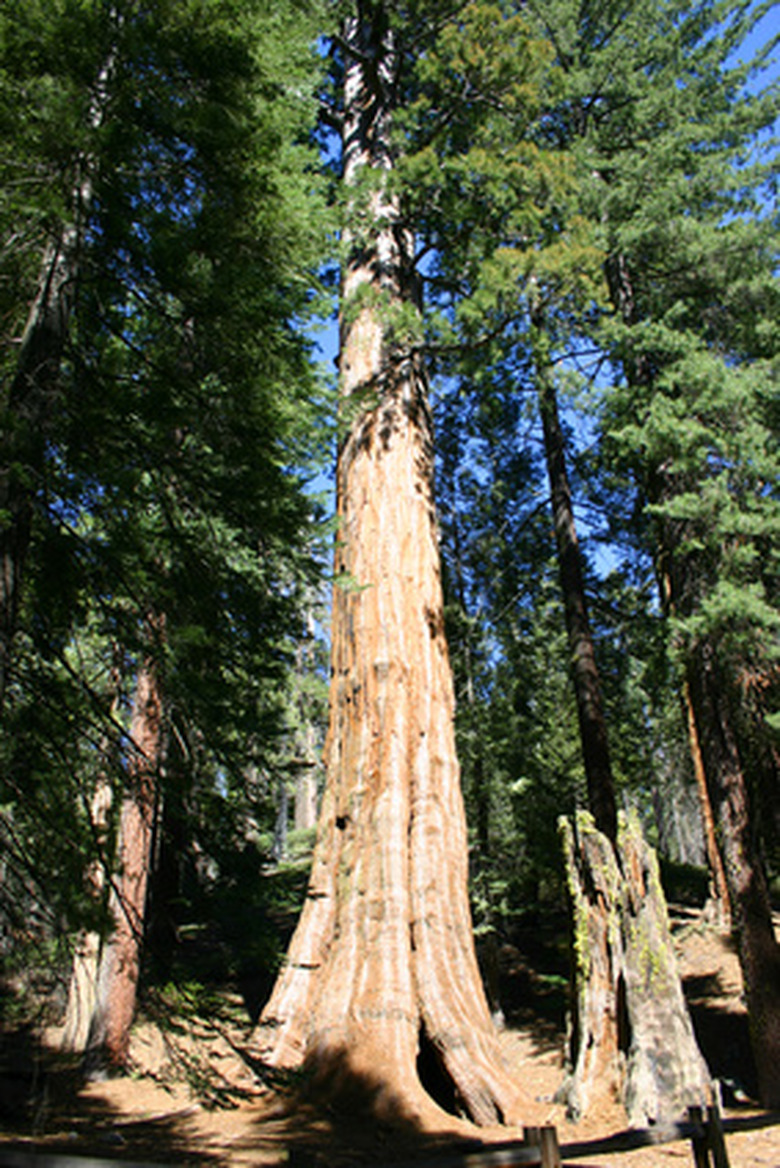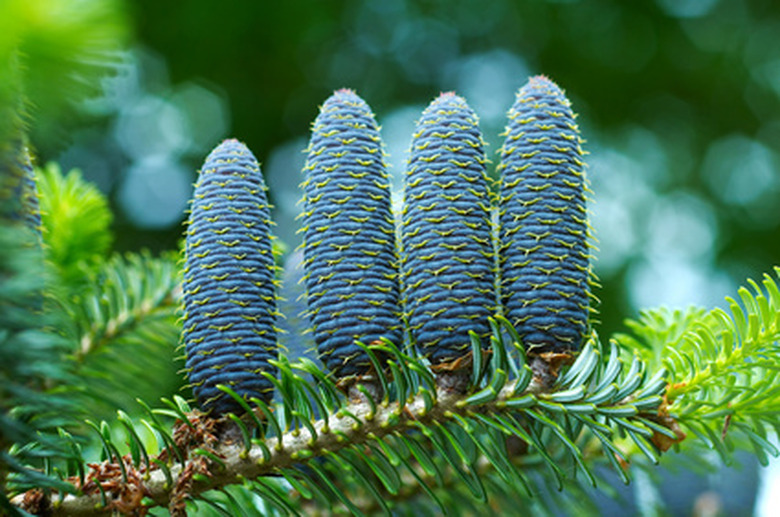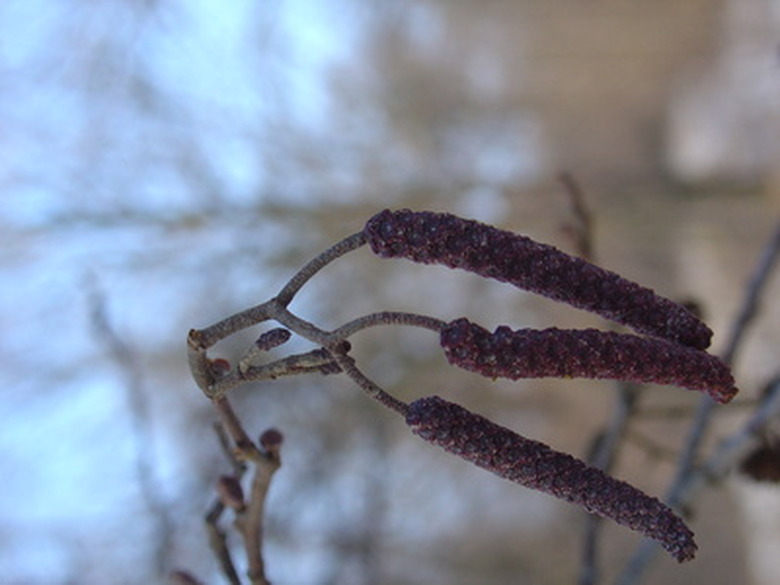Different Kinds Of Tree Cones
Conifers, or cone-bearing trees, are mostly evergreen and have thin, spiky leaves called needles. Conifers include the pine, fir and spruce families. The cones of these trees vary widely in size, color and texture, but all carry and protect the tree's seeds until they are mature, at which point the cones release the seeds to the winds. Some deciduous trees also form hard, conical-shaped seed pods, but these are properly called catkins rather than cones.
Pine and Sequoia Cones
Trees species in the pine family (Pinus spp.) are conifers with long flexible needles. Pine tree seeds are held in cones that vary widely in size depending on the species, but all are characterized by hard, woody scales attached to a central stem. Once the cone opens and the pine seeds are released, pine scales remain attached to the central core, resulting in a hard, pyramidal shaped cone which is very attractive for many craft uses.
- Conifers, or cone-bearing trees, are mostly evergreen and have thin, spiky leaves called needles.
Sequoia cones differ from pine cones in that the bracts, which, according to Charles Bessey writing on the "Morphology of the Pine Cone" for the University of Nebraska-Lincoln in 1902, are part of the stamens or reproductive organs of the sequoia flower, comprise the dominant visible structure of the cone. Instead of open petal-like scales such as on a pine cone, the sequoia cone appears to be a series of diamond-shaped woody blocks with narrow diagonal openings in between them which release the sequoia seeds.
Spruce and Fir Cones
Spruce cones are softer than pine cones, according to the University of Saskatchewan Extension. Spruce cone scales are thinner, generally downward pointing toward the tip of the cone, and remain flexible rather than becoming woody like those on a pine cone. Fir cones appear similar in structure, but grow pointed upward on the tree branches, not hanging downward like spruce cones. The Saskatchewan Extension notes that fir cone scales are also deciduous–they fall off of the central cone axis each year, leaving the core of the cone remaining standing upright on the tree branches.
Catkins
Many deciduous trees, including birch (Betula spp.), alder (Alnus spp.) and pecans (Carya illinoinensis) flower in descending, tapering spikes that, according to the University of Massachusetts Extension Service, are properly called catkins. In many of these tree varieties, particularly alders, the supporting stem frame of these catkins hardens into a woody, conical structure after blooming is completed. While these structures are commonly referred to as cones, and are often used in crafts and decorating along with pine cones, botanically they remain catkins, or catkin shells, as the trees they come from are not conifers.
- Sequoia cones differ from pine cones in that the bracts, which, according to Charles Bessey writing on the "Morphology of the Pine Cone" for the University of Nebraska-Lincoln in 1902, are part of the stamens or reproductive organs of the sequoia flower, comprise the dominant visible structure of the cone.
- Fir cones appear similar in structure, but grow pointed upward on the tree branches, not hanging downward like spruce cones.



